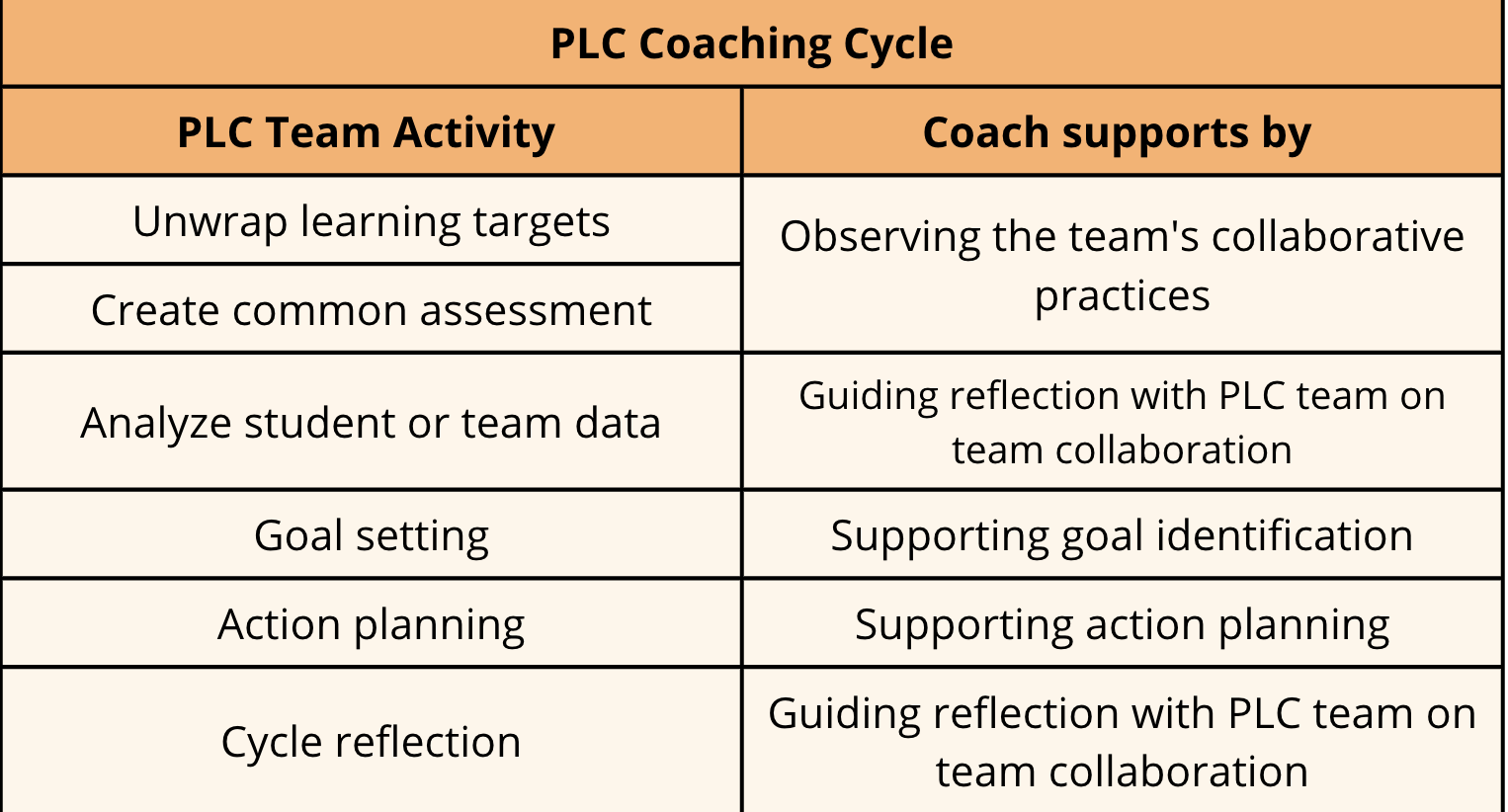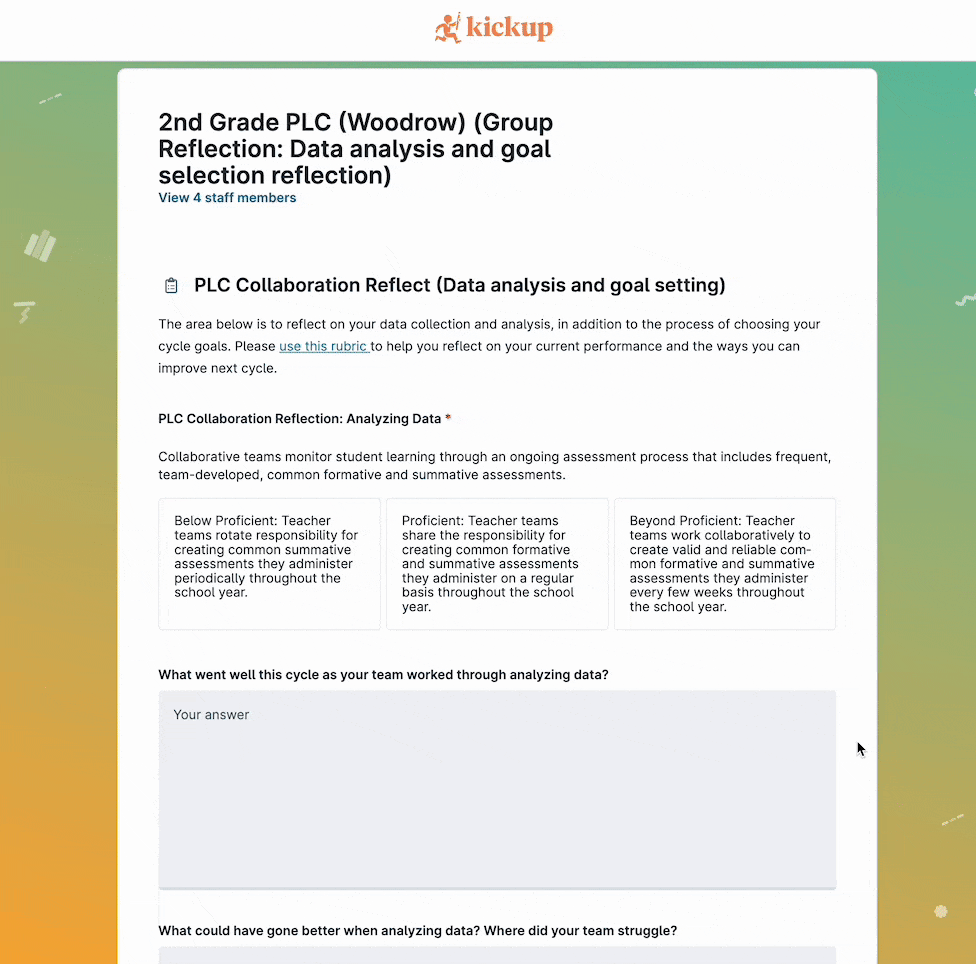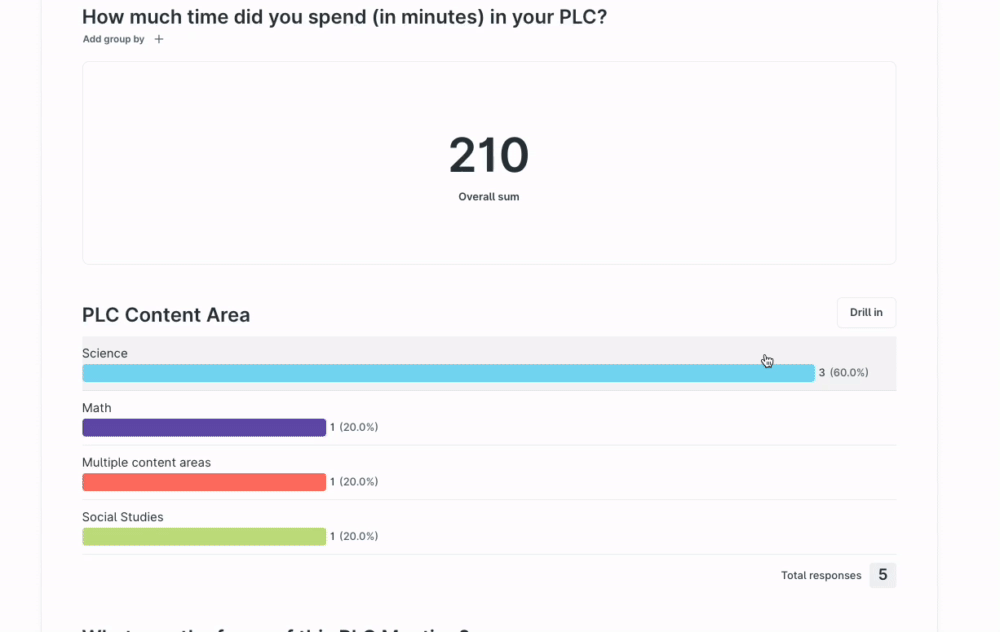
We’ve all seen what happens when professional learning communities (PLCs) lack structure. Without clear purpose and goals, they can devolve into unproductive venting sessions that waste time and resources, create disillusionment, and decrease teacher morale.
But when done right, PLCs have significant positive impacts across the board. A well-structured PLC plays to the collective strengths of its teachers, allowing them to support, learn from, and grow with each other.
So how do districts set their PLCs up for success? Instructional coaches. An instructional coach can be a powerful asset to get the PLC off the ground and provide ongoing support for its practice, just like they would an individual teacher.
The key difference is that, unlike individual supports, the coach doesn’t facilitate the PLC itself. Instead, they help the group identify and fulfill their self-directed goals, empowering members take ownership of their professional development and drive their own learning forward.
Let’s explore how one coach might help a whole PLC group reach its full potential:
Coaching cycles are a framework for meaningful, ongoing teacher support. The same aspects that make coaching cycles so impactful for individuals can be applied to ensure the work done in PLCs is impactfully centered on teacher and student growth.
There are several benefits to structuring PLCs through a coaching cycle. A coach might help PLC members:
In short, a coach doesn’t tell the PLC what to do: they provide the structure for the members to decide for themselves, and ongoing support to help them reach that potential.

The coach responsibility during the PLC coaching cycle is multifaceted:
To start moving toward success, it’s critical that everyone understands exactly what that looks like. If you don’t already have one, create a building- or district-wide success rubric that outlines the expectations and goals for PLCs as a whole.
Observing the PLC in action is the essential first step to a PLC coaching cycle. By sitting back and observing how the current meetings function, an instructional coach can begin to understand what areas of improvement are needed in order to move the team forward in their collaboration practices.
After observing a PLC meeting, the instructional coach leads the team through a self-assessment using the rubric. Be explicit that this activity isn’t evaluative; it is a reflection tool used to help the PLC create its own goals. The ultimate measurement of achieving those goals is a positive impact on student achievement.

A coach’s primary goal while coaching PLCs is not to coach them on how to run effective PLCs (although it might feel like it in the beginning, particularly if it’s a new process for everyone). Instead, the primary objective is improving collaborative practices: leading teams to collaborate more clearly, frequently, and effectively.
While PLCs are reflecting on the data — whether that be internal data or student data — the coach encourages members to think more deeply, in order to help them make useful conclusions to inform the PLC cycle’s goal(s).
Instructional coaches at this stage of the PLC cycle may ask questions like:
This step of the PLC group coaching cycle is focused on two main activities:

The team-specific collaboration goal helps the team focus on ways to increase team collaboration. The team knows they’ve collaborated most effectively when the team sees an impact on student achievement data.
An example of a PLC coaching cycle goal might look like this:
The PLC team will improve our collaborative practices on creating a common assessment for the following learning targets:
The team will demonstrate success on improving our collaborative practices if we can collect more granular student data on pre-summative assessments.
The last step of a PLC coaching cycle involves the coach helping team members to make a plan of action achieving their PLC coaching cycle goal. At this step, coaches might ask questions like:
What happens after action planning? Start all over again. After implementing the plan made by the PLC, the coach supports them through analyzing their own data and understanding if they achieved the goal. If so, the team will reflect on ways to improve their PLC’s collaborative practices even further. If not, another cycle starts on improving that specific collaboration skill.

With KickUp, you can:

KickUp’s Group Coaching Cycles allows you to make better, smarter decisions on PLC implementation and empower teachers through real-time insights and meaningful data. Ready to start investing in your educators’ growth? Let's talk.
Schedule a demo with one of our friendly team members.